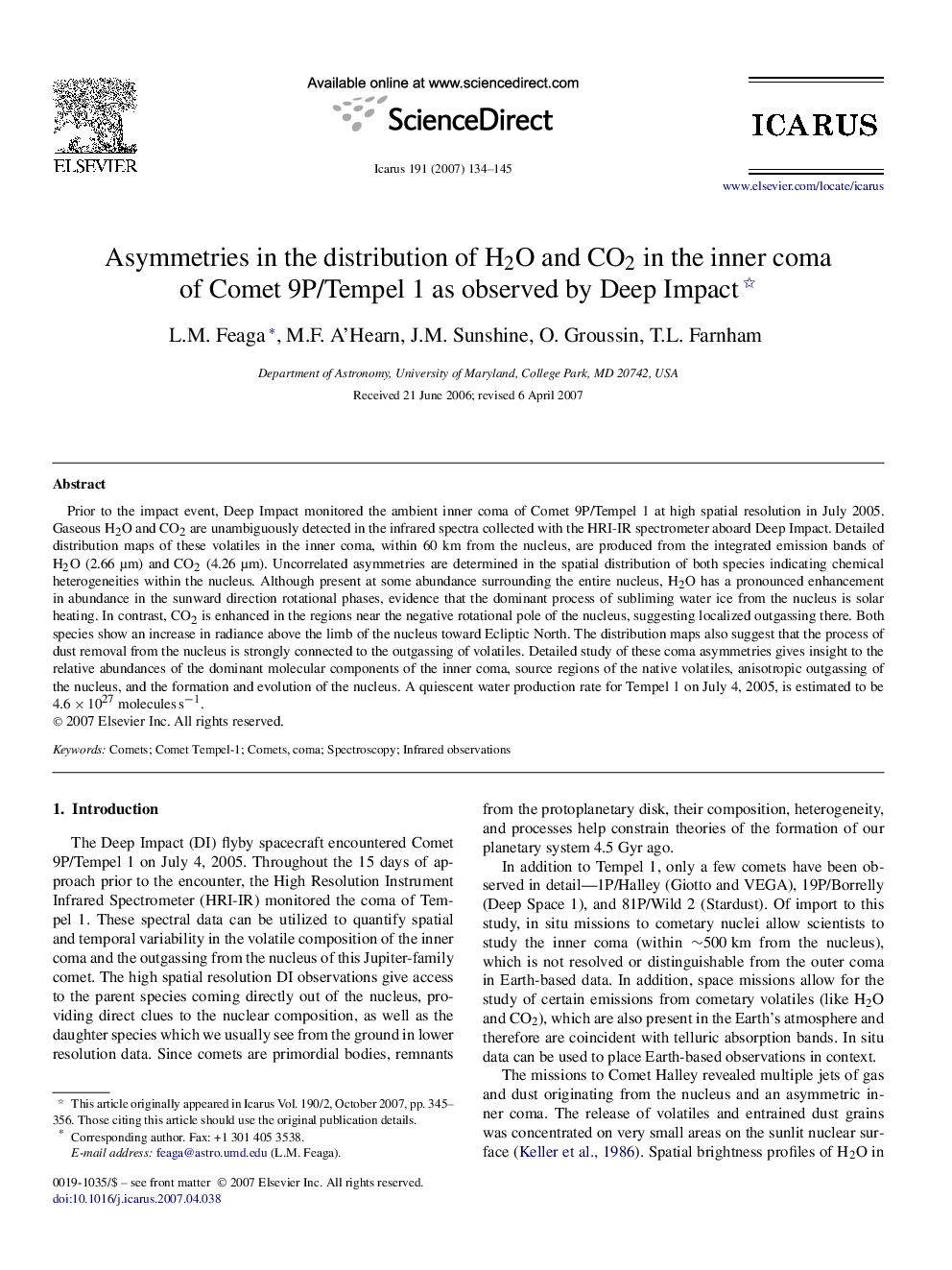| کد مقاله | کد نشریه | سال انتشار | مقاله انگلیسی | نسخه تمام متن |
|---|---|---|---|---|
| 1775242 | 1021188 | 2007 | 12 صفحه PDF | دانلود رایگان |

Prior to the impact event, Deep Impact monitored the ambient inner coma of Comet 9P/Tempel 1 at high spatial resolution in July 2005. Gaseous H2O and CO2 are unambiguously detected in the infrared spectra collected with the HRI-IR spectrometer aboard Deep Impact. Detailed distribution maps of these volatiles in the inner coma, within 60 km from the nucleus, are produced from the integrated emission bands of H2O (2.66 μm) and CO2 (4.26 μm). Uncorrelated asymmetries are determined in the spatial distribution of both species indicating chemical heterogeneities within the nucleus. Although present at some abundance surrounding the entire nucleus, H2O has a pronounced enhancement in abundance in the sunward direction rotational phases, evidence that the dominant process of subliming water ice from the nucleus is solar heating. In contrast, CO2 is enhanced in the regions near the negative rotational pole of the nucleus, suggesting localized outgassing there. Both species show an increase in radiance above the limb of the nucleus toward Ecliptic North. The distribution maps also suggest that the process of dust removal from the nucleus is strongly connected to the outgassing of volatiles. Detailed study of these coma asymmetries gives insight to the relative abundances of the dominant molecular components of the inner coma, source regions of the native volatiles, anisotropic outgassing of the nucleus, and the formation and evolution of the nucleus. A quiescent water production rate for Tempel 1 on July 4, 2005, is estimated to be 4.6×1027 moleculess−1.
Journal: Icarus - Volume 191, Issue 2, Supplement, 2007, Pages 134–145